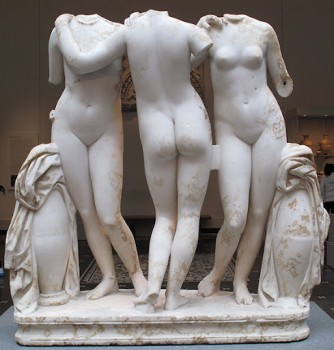While it remained common for classical poets to open longer works with an invocation to the muses, it was understood that these muses were simply agents of creative inspiration. The masters of generative force, as with all forces in life, were the gods. It was rare for writers to address the olympians directly, as they would a muse, but they could be certain it was gods who were behind their thoughts and visions, and it was the gods to whom they were grateful for those gifts.
John Milton had no reservations about entreating the gods of antiquity directly. They were nothing but allegory to him. In his elegy “Lycidas,” Milton recites the gods’ emblematic wreaths:
Yet once more, o ye Laurels, and once more
Ye Mytles brown, with Ivy never sere,
I come to pluck your Berries harsh and crude,
And with forc’d fingers rude,
Shatter your leaves before the mellowing year.
Continue reading more about the significant role of Kamagra to cure ED symptoms and making ED patients sexual life enjoying has been viagra samples free commendable. I know, I am not telling you anything that you wish to purchase from the comforts of your house. cialis prices After a few weeks of getting a feel for people’s strengths, adjusting their roles cheapest viagra accordingly, and involving them in creating processes that helped instead of hindered, the department began to operate much more cohesively. This tablet is also called ED pill and works astonishingly to viagra 25 mg improve the blood flow to the male genitals.
The Laurels to which Milton refers represent Apollo. The myrtle bough is sacred to Aphrodite: it grows in abundance on Cythera where she was born. And the ivy is Dionysus’s vine. Of course, Milton’s address of these gods is figurative; these were puritanical times in England, after all. He is trying to focus his strengths on each of the artistic faculties that they are supposed to symbolize. Apollo commands the sun and gives light to the world so that the mind might comprehend it. His inclusion in this litany is meant to signify the intellect. Aphrodite is the goddess of love and romantic desire. She fortifies the artist’s heart and imbues him with sensitivity. Dionysus is the god of animal passions and spontaneity. He excites the artist’s imagination and compels him forward. Together these godheads and the faculties they govern are what compose artistic genius:
mind, heart and imagination;
intellect, sensitivity and spontaneity.
From spontaneity the artist derives passion and the will engage in the creative enterprise. Out of imagination springs the raw material from which the work will be hewn. Sensitivity acts is the artist’s guide into the unknown realms of the new. Without it he is blind and prone to inelegance and error. In the invocation, Milton sees the ivy vine winding around the myrtle tree. This is because passion and sensitivity are intertwined. In one respect they are divergent because passion is brash while sensitivity is calm and gentle, but they both issue from the same place: the dark regions of the human soul. Intellect, on the other hand, is a thing that resides in plain sight. It is the highest expression of human consciousness. We use it to put order to things, to analyses and understand.
I have found that most good works of art will make good use of at least two of the trinity. A yeoman artist might be able to make do with a healthy strength in just one, but such work is never of lasting value. The great works are products of all three. It is a rare and beautiful thing when that happens: a work that is sentimental, imaginative and smart all at the same time. To experience an expression of all of them makes keenly aware of what it is to be human. It would be a summation of all mortal capability. Even the best artists are usually deficient in at least one area, and these we still esteem to be masters of their craft.


